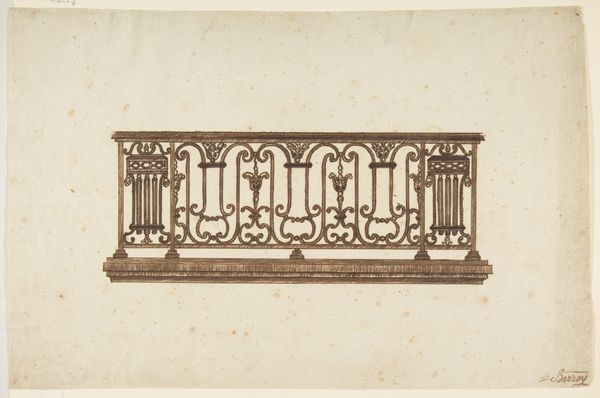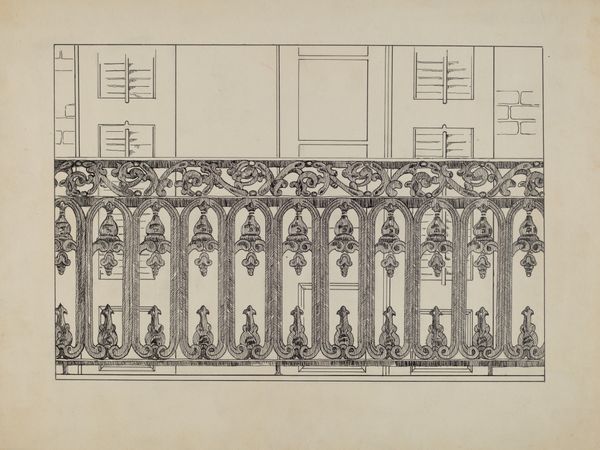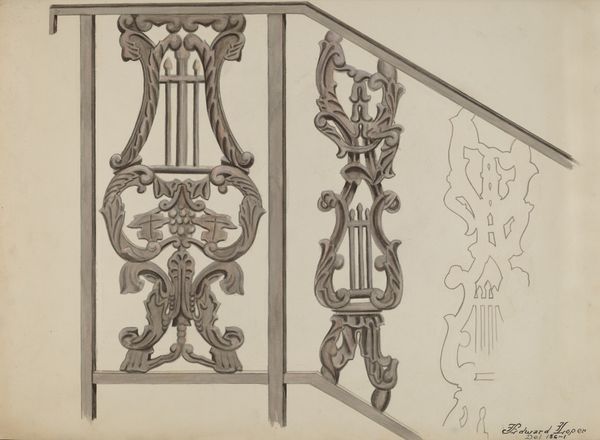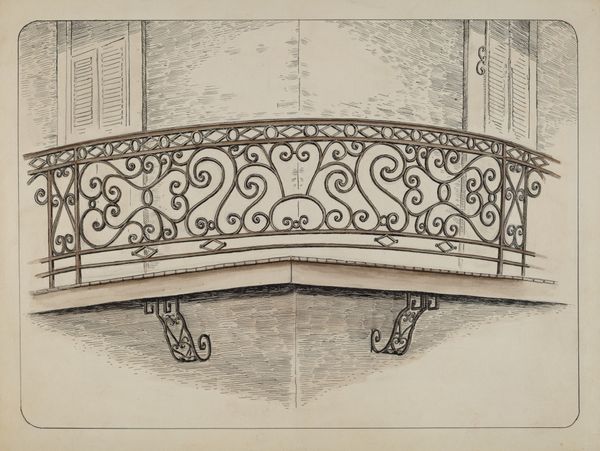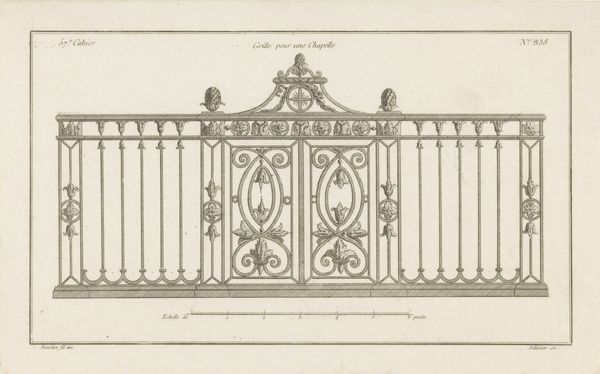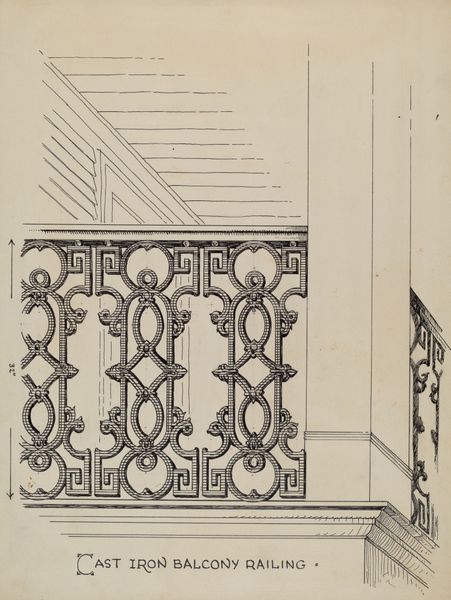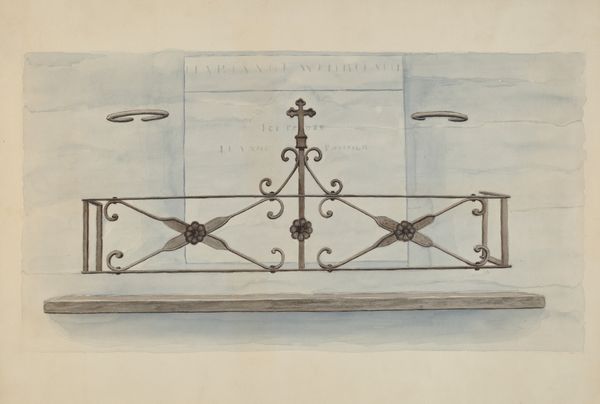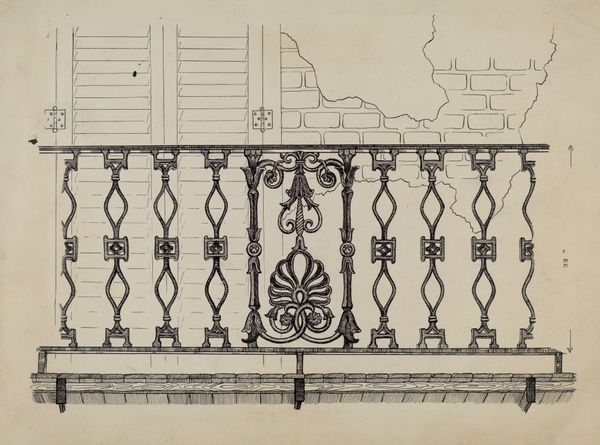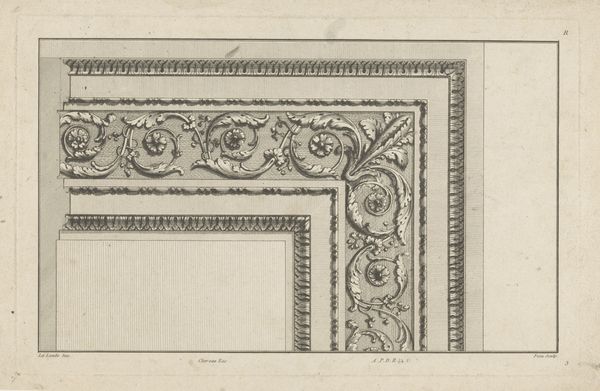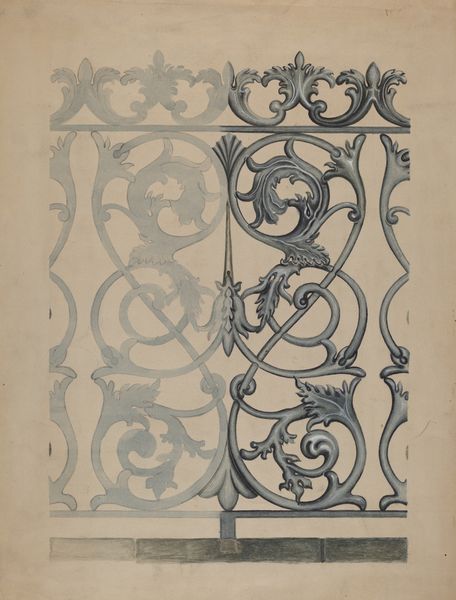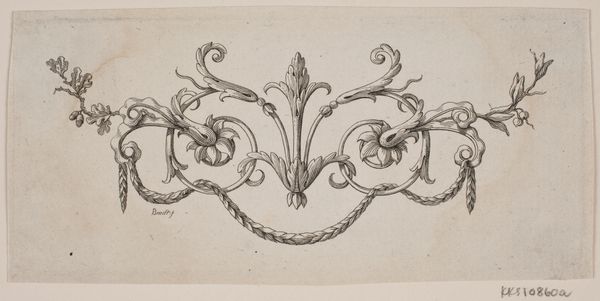
drawing, graphic-art, metal
#
drawing
#
graphic-art
#
metal
#
old engraving style
#
form
#
geometric
#
line
Dimensions: overall: 23 x 30.6 cm (9 1/16 x 12 1/16 in.)
Copyright: National Gallery of Art: CC0 1.0
Curator: Let's turn our attention now to this drawing, "Cast Iron Balcony Rail," made around 1936. It seems to be a study or a template for metalwork. Editor: Immediately, the piece strikes me as quite somber. The limited tonal range, the graphic quality – it evokes a feeling of industrial melancholy and a certain functional stoicism. Curator: I see it. Look at the precise line work, and the way the artist has focused on form and repetition. We see four identical modules here, each a study in geometric variation and symmetry. Note the central motifs, where circles intersect straight lines. The rhythm it creates is compelling. Editor: Absolutely. But considering the context, this isn't merely about form, is it? Ironwork like this often spoke of social divides, acting as barriers. Consider how such railings signified ownership and separated public from private space in rapidly urbanizing environments. The implied labor in producing these objects also shouldn't be ignored. Curator: Indeed. Though without knowing its exact location or the specific circumstances, interpreting the intent remains speculative. Nevertheless, the artist is clearly fascinated by the balance between ornate flourishes and structural stability. The very linearity of it guides the viewer's eye, almost enforcing order. Editor: Perhaps that order reflects the desire for control and imposed stability. We see this tension play out in public and private space even today. Who is invited into these "secured" enclaves, and who is excluded? How does something ostensibly "decorative" underscore hierarchies? Curator: An important perspective, no doubt. But what I keep returning to are the inherent contradictions within each module. See how the rigid vertical lines give way to softer curves? The piece operates, I believe, on these formal oppositions. Editor: Precisely why this seemingly simple illustration yields such interesting insights. These lines are not merely neutral; they are actively shaping and dictating societal flow. Even design serves a political function. Curator: It’s fascinating how the simplicity of the line allows for so much complexity. A testament to the power of careful observation and reduction. Editor: I agree. A single piece, simultaneously formal and symbolic. Food for thought, indeed.
Comments
No comments
Be the first to comment and join the conversation on the ultimate creative platform.


